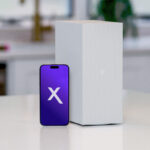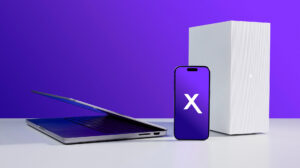The Future of Smartphones: USB-C and the Battle Between Apple and Android
In recent conversations amongst tech enthusiasts, a thought-provoking discussion unfolded around the competitive smartphone landscape, particularly between Apple and Android. The phrase, “If the iPhone 12 comes with USB-C, Android is in serious trouble,” encapsulates the essence of this dialogue, underscoring the need for Android manufacturers to rethink their strategies in an industry rapidly evolving toward a more integrated ecosystem.
The USB-C Game Changer
The introduction of USB-C by Apple in their future devices could significantly shift the consumer landscape. Many argue that Android manufacturers have been slow to innovate, leading to a vacuum where Apple could potentially dominate the smartphone market even further. The ability to seamlessly integrate devices—such as laptops, tablets, and smartphones—through a common charging port would be a monumental step toward creating a more cohesive user experience.
Currently, one of Apple’s strengths lies in the synergy between its devices. The transition to USB-C could enhance this synergy, allowing for rapid file transfer between devices and broader compatibility with various peripherals. The marketing power behind such a shift could convince countless users to transition to Apple products, especially when their friends or family are already within the Apple ecosystem.
Competition and Innovation: The Android Dilemma
Apple’s dominance is coupled with the memories of competitive products that Android manufacturers used to release. Companies like Motorola and HTC once made significant impacts within the smartphone arena, but their absence has created a mostly Samsung-driven market. Without a diversified Android market, consumers are left with fewer choices, which hampers innovation.
When looking at the tablet market, Apple has consistently outperformed Android. With only a couple of manufacturers, primarily Samsung, providing high-quality options that could rival the iPad, the question remains: where does that leave the average consumer looking for alternatives? As technology enthusiasts, we must consider whether this trend will continue or if we will see a resurgence of competitors that challenge Apple’s flagship devices.
The Role of Desktop Experience and Mobile Versatility
The value of smartphones has transcended traditional expectations, especially concerning the functions they serve in our daily lives. With the advent of apps that enable editing, content creation, and multi-device connectivity, the lines between smartphones and laptops continue to blur. Samsung’s DeX mode, which allows users to utilize their smartphones as desktop computing devices, is a prime example of pushing that boundary. This brings up the potential for productivity-enhancing solutions, allowing users to perform computer-level tasks right from their phones.
Many consumers have yet to fully realize the capabilities of their devices—much like how tech enthusiasts sometimes overlook the average consumer’s needs and experiences. For people looking for desktop-like versatility in their mobile devices, a comprehensive understanding of existing features can benefit user satisfaction significantly.
However, there exists a gap where Android manufacturers appear reluctant to capitalize on such innovations. While Samsung has made strides in promoting DeX and producing versatile products, they still fail to adequately market this functionality, leading to missed opportunities.
The Need for Modularity and Expansion
If the smartphone industry is to move forward, manufacturers must embrace modularity and adaptability around their products. Not only would this cater to a broader audience, but it would also establish new price-performance ratios and drive the technological shift consumers crave. This is where the concept of a modular phone, like the Motorola Moto Z series, makes sense. Imagine a smartphone that seamlessly integrates with base stations, docking stations, and accessories, removing compatibility barriers between different device categories.
Google, once a pioneer in mobile operating systems, has fallen behind in terms of consumer-facing solutions. Their foray into Chrome OS has not produced the results anticipated, while the underutilization of Android’s capabilities in terms of versatility remains concerning. If Google were to push forward with more innovative solutions—such as making Android phones operate more much like Chrome OS—consumers could experience the crossover of functionality they increasingly desire.
Apple Versus Android: Looking Ahead
The tension between Apple and Android represents broader industry trends, as each company drives the other to improve its offerings. With Apple potentially bringing USB-C to their next smartphone, it has never been more crucial for Android manufacturers to step up their game. If they do not, they risk losing out on consumers who wish to make a seamless transition between devices.
While Samsung’s investments in DeX and other functionalities show promise, without aggressive marketing and comprehensive ecosystem solutions, the gap between them and Apple will only widen. Apple’s user-friendly interface and straightforward marketing have created a strong brand loyalty, and as tech advocates, we need to highlight the value of innovations within the Android ecosystem to encourage more competition.
Conclusion: Embracing Change and Challenging Standards
In conclusion, the smartphone landscape is continuously evolving, and the need for Android manufacturers to innovate and expand their offerings has never been more urgent. With the looming possibility of Apple adopting USB-C technology, Android risks being left behind if it doesn’t capitalize on current advancements and develop a more cohesive ecosystem.
As tech enthusiasts, we can play a pivotal role in advocating for these changes through discussions and sharing what is possible with today’s technology. After all, a vibrant and competitive smartphone market benefits everyone, leading to enhanced product quality and innovation that consumers truly need.
By supporting the conversation on modularity, the significance of efficient hardware, and seamless connectivity across devices, we can encourage Android manufacturers to adapt and thrive—ultimately creating a richer experience for consumers in this rapidly evolving landscape.













